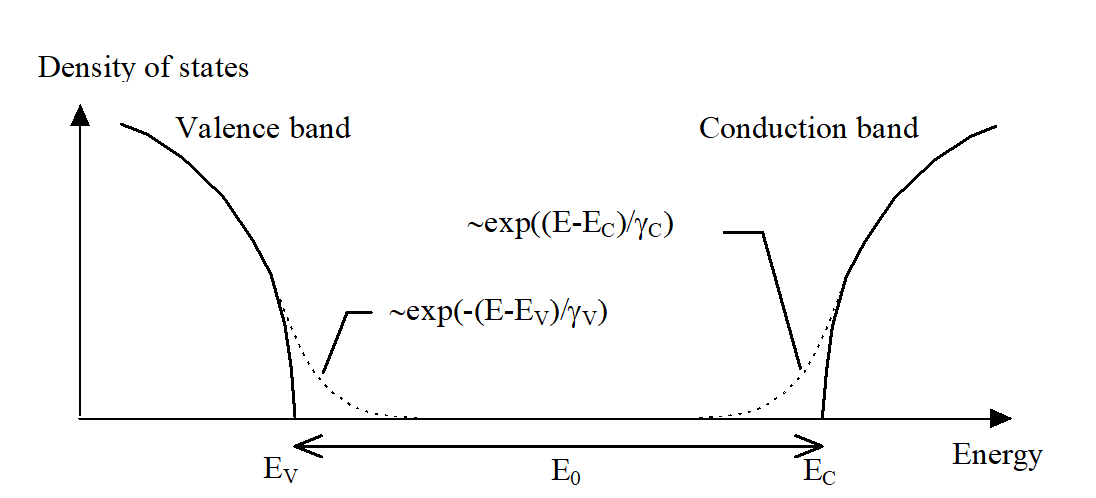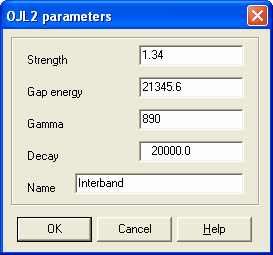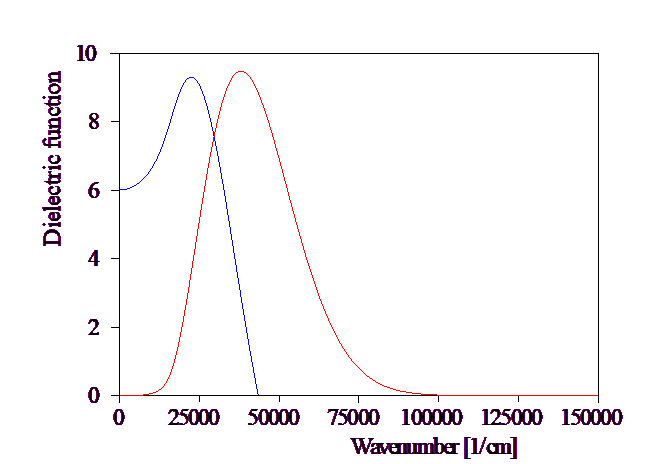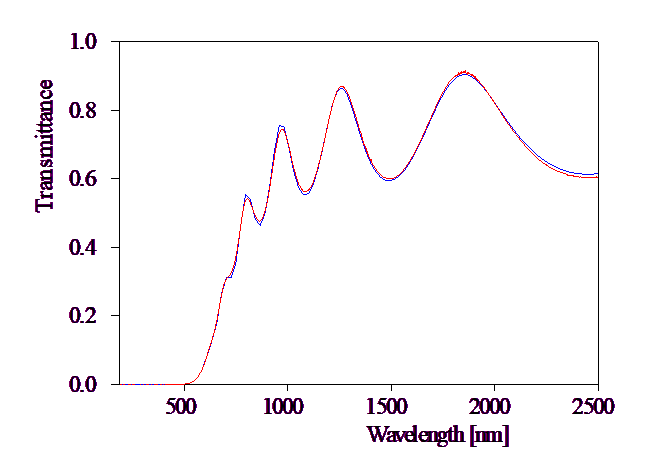This model replaces the OJL model of previous program versions which had a small bug in the computation of the optical constants. If you import old configurations containing OJL susceptibilities the old model is still used, however.
The so-called OJL model for interband transitions is due to [O'Leary 1997A] where expressions for the joint density of states are given for the optical transition from the valence band to the conduction band. Parabolic bands are assumed with tail states exponentially decaying into the band gap as sketched in the following graph:

The fit parameters of the OJL interband transition model are the gap energy E0, the tail state exponent of the valence band γ and the overall strength of the transition.
The imaginary part of the dielectric function is proportional to the combined density of states obtained from the above assumption on the density of states of the valence and conduction band. Without modification, the original expression for the imaginary part of the dielectric function would increase to inifinity with increasing energy. Due to this unrealistic behaviour the construction of the real part of the dielectric function by two Fourier transforms is not possible. Therefore, a so-called decay parameter has been added to the original expressions to drag down the imaginary part to zero for high frequencies. The OJL term is simply multiplied by the exponential exp(-sqr((wavenumber-E0)/decay))).
The SCOUT dialog to set these parameters is the following:

The gap energy, gamma and the decay constant are to be specified in wavenumbers (1/cm).
An OJL dielectric function example is shown below:

In this case the dielectric function had been adjusted to a transmission spectrum of a thin amorphous film on a microscope glass slide:
